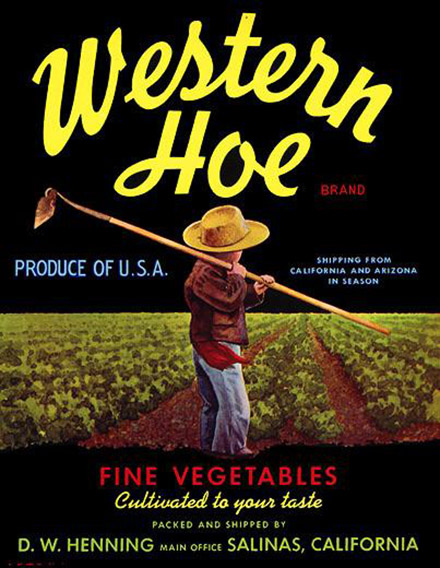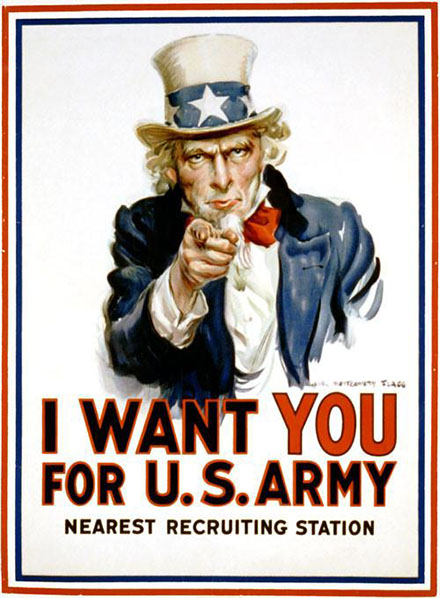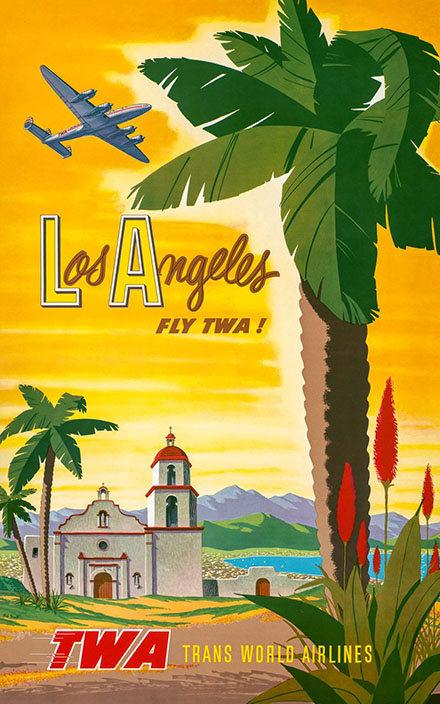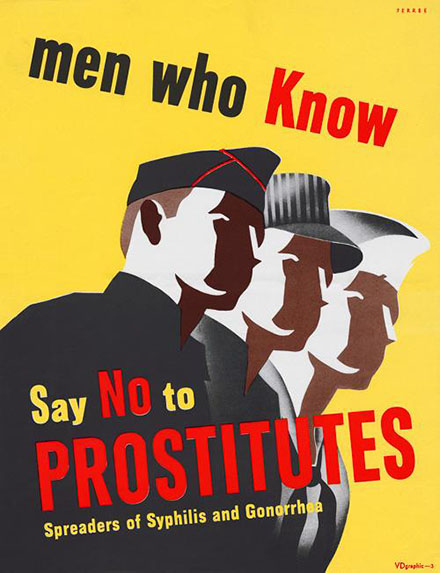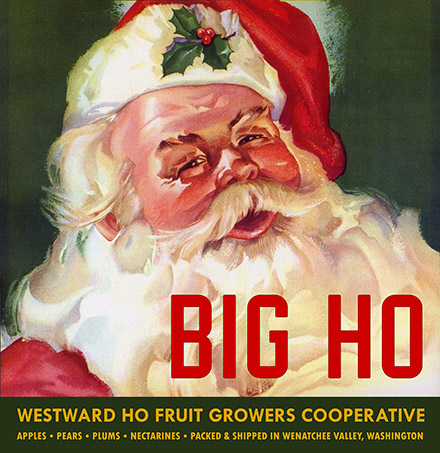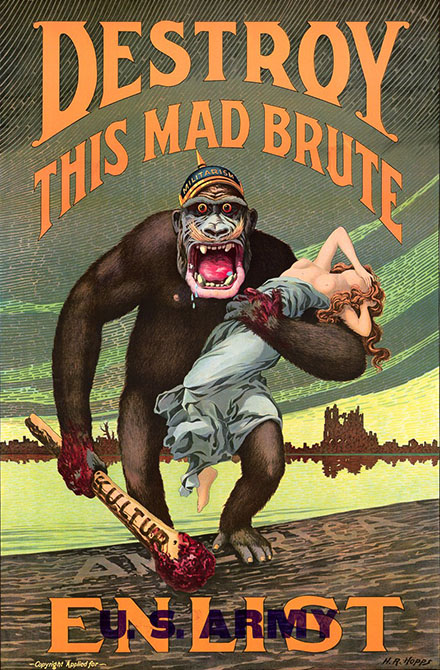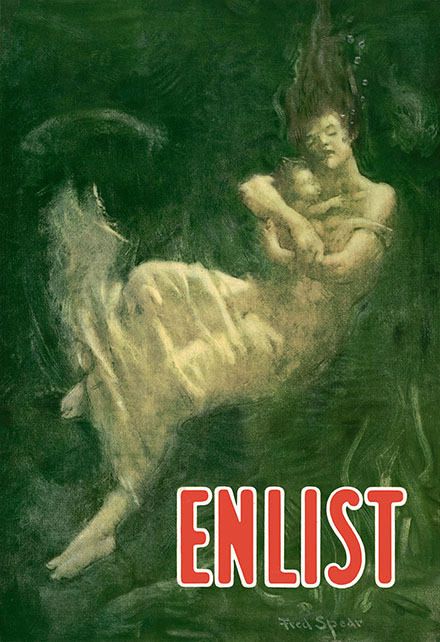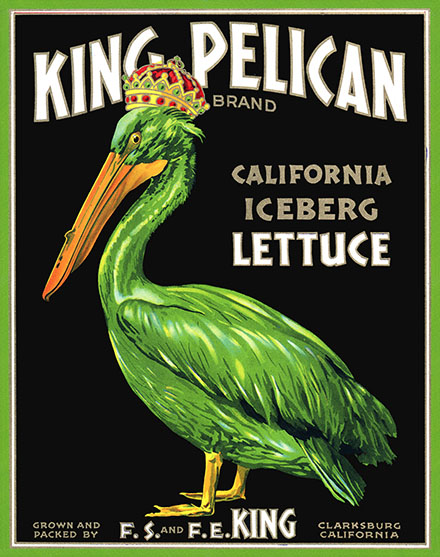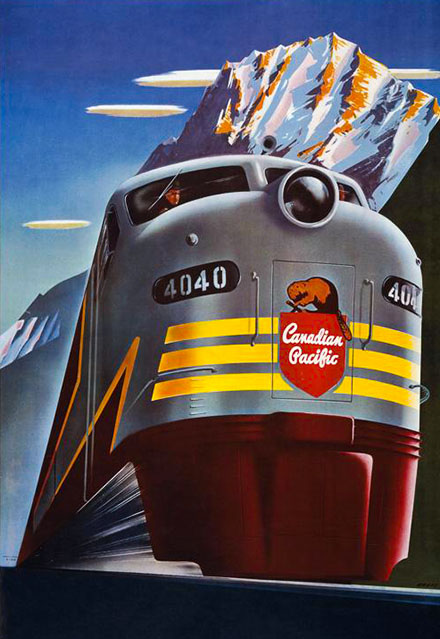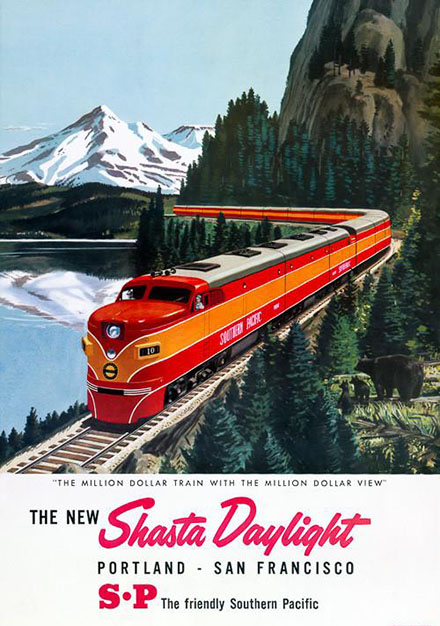


Framed or unframed, desk size to sofa size, printed by us in Arizona and Alabama since 2007. Explore now.
Shorpy is funded by you. Patreon contributors get an ad-free experience.
Learn more.

- Freeze Frame
- Texas Flyer wanted
- Just a Year Too Soon
- WWII -- Replacing men with women at the railroad crossing.
- Yes, Icing
- You kids drive me nuts!
- NOT An Easy Job
- I wonder
- Just add window boxes
- Icing Platform?
- Indiana Harbor Belt abides
- Freezing haze
- Corrections (for those who care)
- C&NW at Nelson
- Fallen Flags
- A dangerous job made worse
- Water Stop
- Passenger trains have right of way over freights?
- Coal
- Never ceases to amaze me.
- Still chuggin' (in model form)
- Great shot
- Westerly Breeze
- For the men, a trapeze
- Tickled
- Sense of loneliness ...
- 2 cents
- Charm City
- What an Outrage
- Brighton Park
Prints
- Panoramas
- Kodachromes (Color Photos)
- Animals
- Aviation
- Bathing Girls!
- Bizarre & Weird
- Cars & Trucks
- Cities
- Civil War
- Colorized Photos
- Factories
- Farked
- Florida History
- iPhone Wallpaper
- Kids
- Kitchens
- Member Photos
- Mining
- Pretty Girls
- Railroads
- Streetcars
- Service Stations
- Sports
- Technology (Antiquated)
- tterrace
- WPA Posters
- World War II
- WW2 Color Photos
- All Galleries
Vintage photos of:
- Atlanta
- Atlantic City
- Baltimore
- Birmingham AL
- Boston
- Buffalo NY
- Charleston SC
- Chicago
- Cincinnati
- Cleveland
- Coney Island
- Detroit
- Indianapolis
- Los Angeles
- Louisville
- Memphis
- Miami
- Milwaukee
- Minneapolis
- New Orleans
- New York City
- Oklahoma City
- Philadelphia
- Pittsburgh
- Richmond
- San Francisco
- Savannah
- St. Louis
- Syracuse
- Toledo
- Vicksburg
- Washington DC
- And many more!
Our holdings include hundreds of glass and film negatives/transparencies that we've scanned ourselves; in addition, many other photos on this site were extracted from reference images (high-resolution tiffs) in the Library of Congress research archive. (To query the database click here.) They are adjusted, restored and reworked by your webmaster in accordance with his aesthetic sensibilities before being downsized and turned into the jpegs you see here. All of these images (including "derivative works") are protected by copyright laws of the United States and other jurisdictions and may not be sold, reproduced or otherwise used for commercial purposes without permission.
© 2024 SHORPY INC.
[REV 25-NOV-2014]
The Horrors of Pandemonium: 1865
![The Horrors of Pandemonium: 1865 Richmond, Virginia, in April 1865 showing the burned district along the James River. From photographs of the main Eastern theater of war and fallen Richmond compiled by Hirst Milhollen and Donald Mugridge. View full size.
As the sun rose on Richmond, such a spectacle was presented as can never be forgotten by those who witnessed it. All the horrors of the final conflagration, when the earth shall be wrapped in flames and "melt with fervent heat," were, it seemed to us, prefigured in our capital. The roaring, crackling and hissing of the flames, the bursting of shells at the Confederate Arsenal, the sounds of the Instruments of martial music, the neighing of the horses, the shoutings of the multitudes, gave an idea of all the horrors of Pandemonium. Above all this scene of terror hung a black shroud of smoke through which the sun shone with a lurid angry glare like an immense ball of blood that emitted sullen rays of light, as if loath to shine over a scene so appalling. Then a cry was raised: "The Yankees! The Yankees are coming!" — Richmond resident Sallie Putnam
Upon evacuation of the city, the Confederate government authorized the burning of warehouses and supplies, which resulted in the destruction of factories and houses in the business district. Before the charred ruins of Richmond had cooled, General Robert E. Lee, with the remnant of his army, surrendered to Ulysses Grant at Appomattox Court House on April 9, 1865. [From Embattled Capital, on the National Park Service's Richmond National Battlefield web page.]](https://www.shorpy.com/files/images/03711u.preview.jpg)
Richmond, Virginia, in April 1865 showing the burned district along the James River. From photographs of the main Eastern theater of war and fallen Richmond compiled by Hirst Milhollen and Donald Mugridge. View full size.
As the sun rose on Richmond, such a spectacle was presented as can never be forgotten by those who witnessed it. All the horrors of the final conflagration, when the earth shall be wrapped in flames and "melt with fervent heat," were, it seemed to us, prefigured in our capital. The roaring, crackling and hissing of the flames, the bursting of shells at the Confederate Arsenal, the sounds of the Instruments of martial music, the neighing of the horses, the shoutings of the multitudes, gave an idea of all the horrors of Pandemonium. Above all this scene of terror hung a black shroud of smoke through which the sun shone with a lurid angry glare like an immense ball of blood that emitted sullen rays of light, as if loath to shine over a scene so appalling. Then a cry was raised: "The Yankees! The Yankees are coming!" — Richmond resident Sallie Putnam
Upon evacuation of the city, the Confederate government authorized the burning of warehouses and supplies, which resulted in the destruction of factories and houses in the business district. Before the charred ruins of Richmond had cooled, General Robert E. Lee, with the remnant of his army, surrendered to Ulysses Grant at Appomattox Court House on April 9, 1865. [From Embattled Capital, on the National Park Service's Richmond National Battlefield web page.]
- 11 comments
- 93290 reads
Where the Grapefruit Grow: 1937
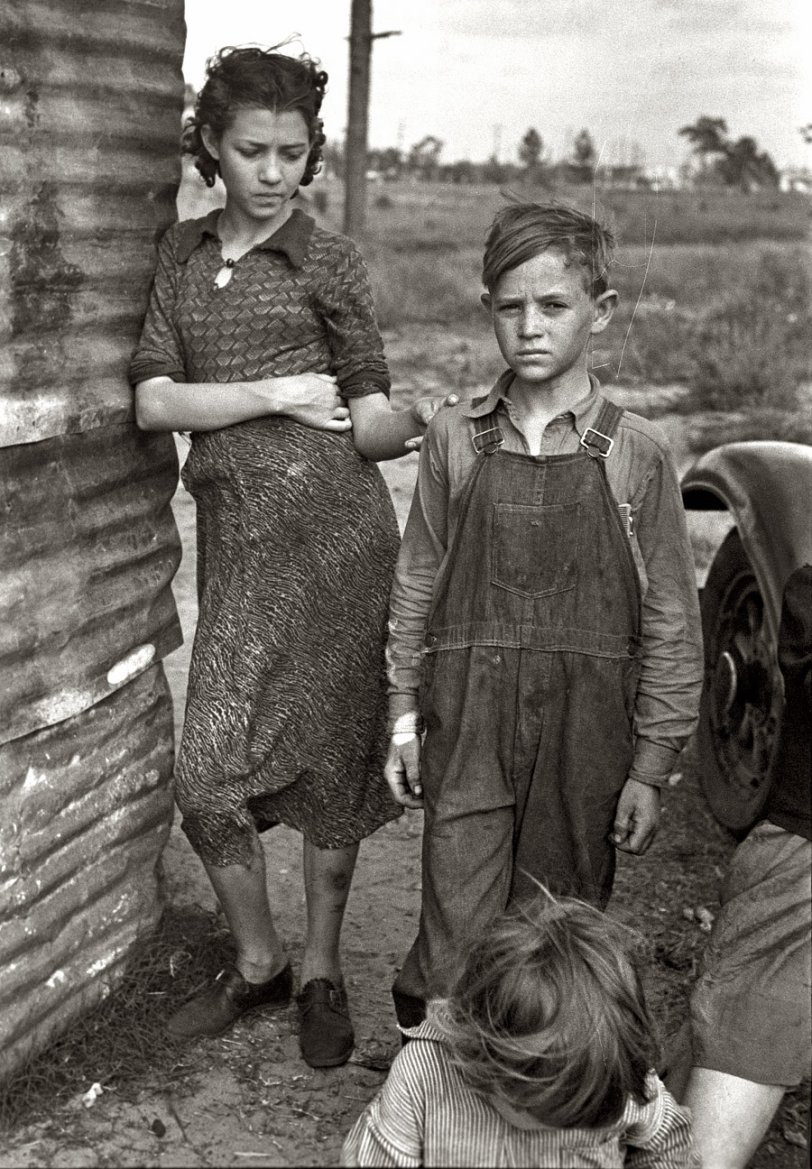
January 1937. "Part of the family of a migrant fruit worker from Tennessee, camped near the packinghouse in Winter Haven, Florida." View full size. 35mm nitrate negative by Arthur Rothstein for the Farm Security Administration.
- 3 comments
- 29234 reads
Our Humble Abode: 1937
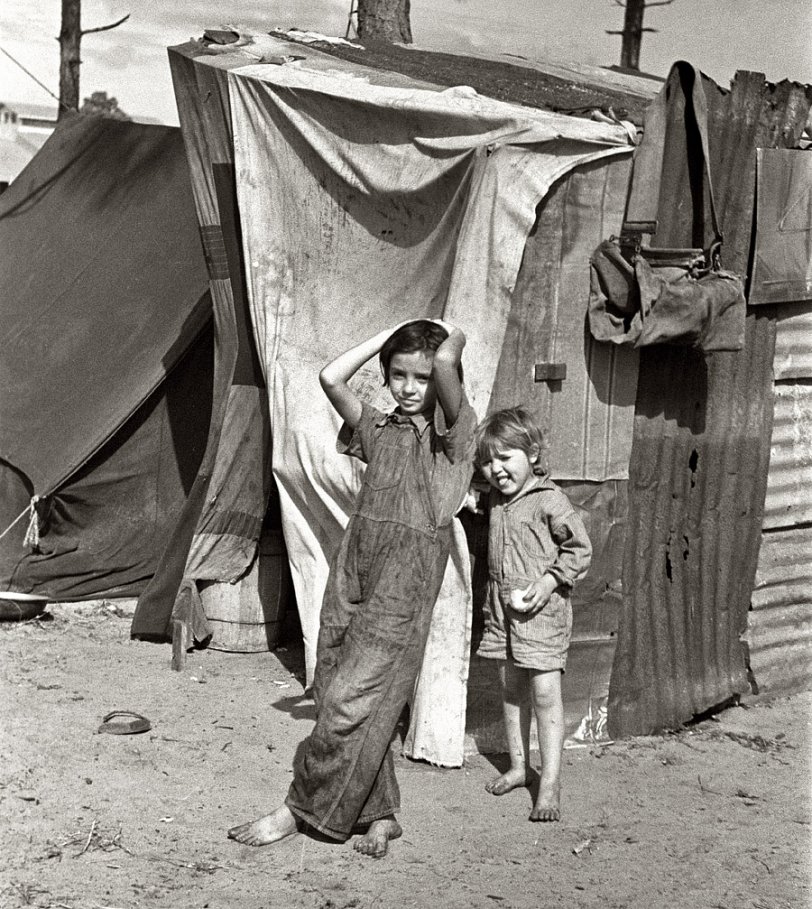
January 1937. "Two children of a migrant fruit worker from Tennessee, standing before their temporary home. This family of eight is camped in a field near the packinghouse at Winter Haven, Florida." View full size. 35mm nitrate negative by Arthur Rothstein for the Farm Security Administration.
- 1 comment
- 24431 reads
Nice Threads: 1908
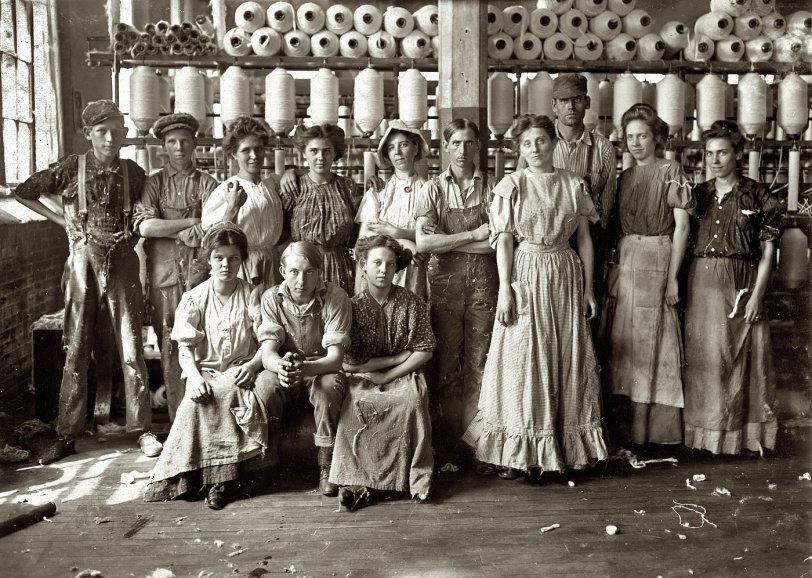
The workplace of 100 years ago. "Operatives in Indianapolis Cotton Mill. Noon Hour. August 1908." View full size. Photograph by Lewis Wickes Hine.
- 5 comments
- 21809 reads
Forth Worth: 1942
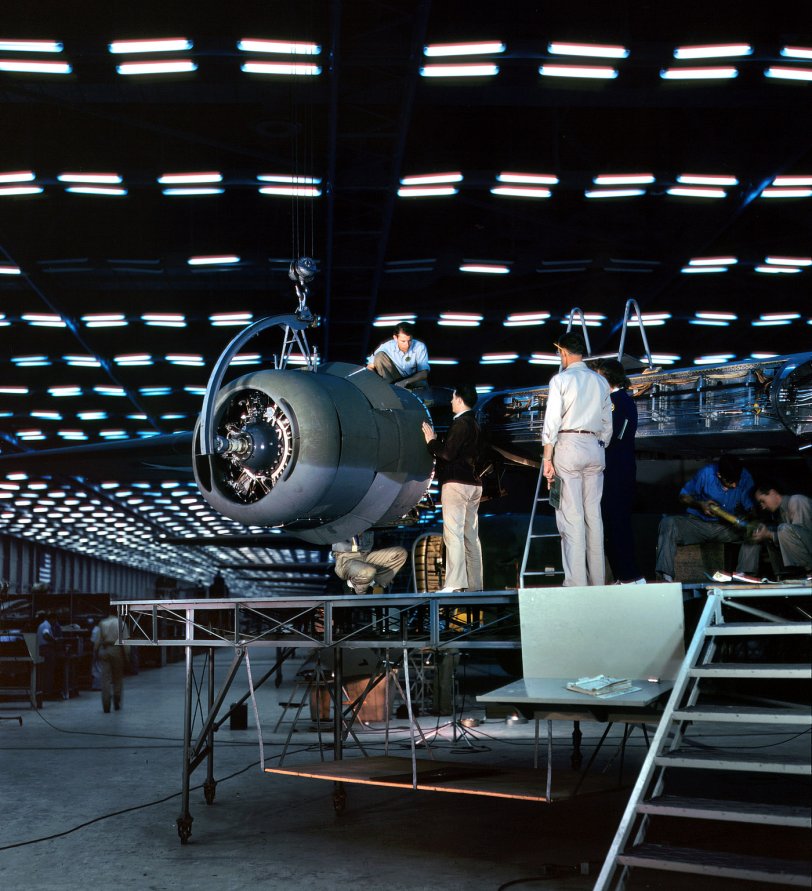
October 1942. Transport assembly hall at the Consolidated Aircraft Corporation plant in Fort Worth, Texas. Lowering an engine into place. View full size. 4x5 Kodachrome transparency by Howard Hollem for the Office of War Information.
- 4 comments
- 29397 reads
Winter Haven: 1937
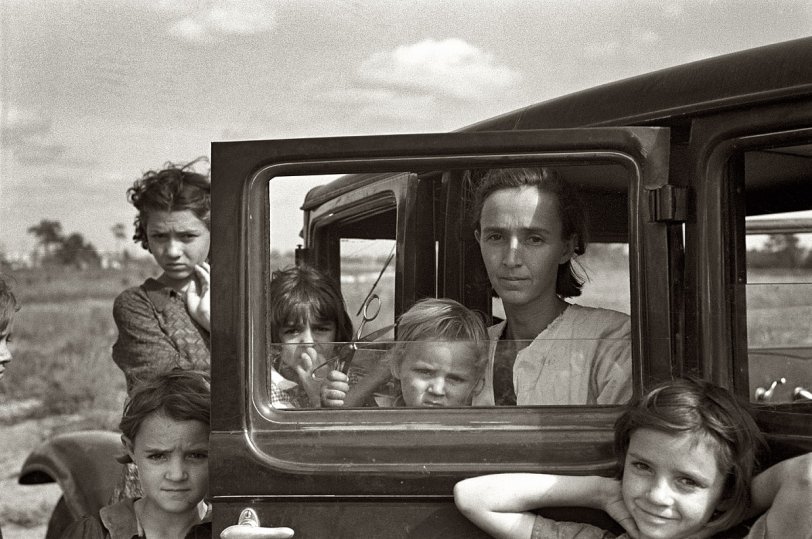
January 1937. Family of a migratory fruit worker from Tennessee, camped in a field near a citrus packer at Winter Haven, Florida. View full size. 35mm nitrate negative by Arthur Rothstein for the Farm Security Administration.
- 5 comments
- 21624 reads
Richmond in Ruins: 1865
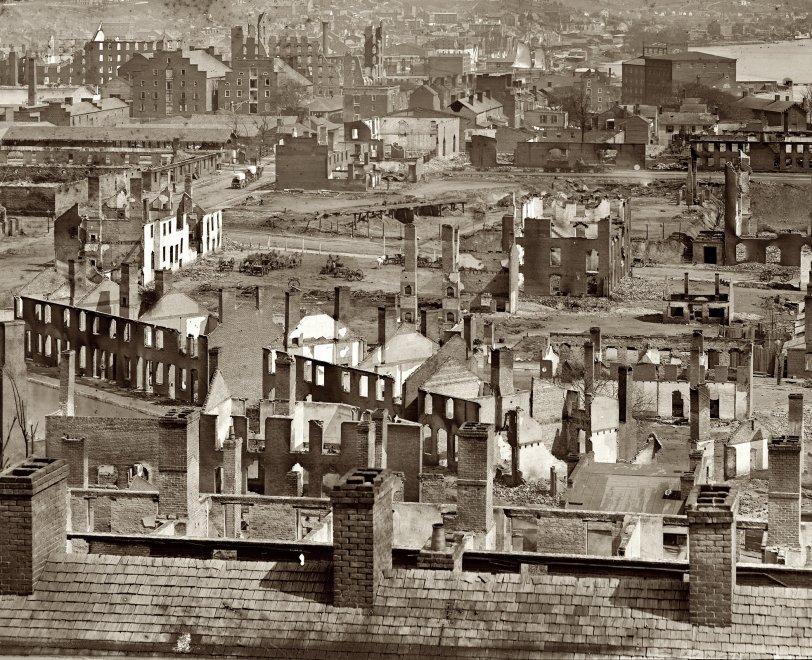
Richmond, April 1865. Partial view of the burned district. From photographs of the main Eastern theater of war and fallen Richmond compiled by Hirst Milhollen and Donald Mugridge. Detail of wet-plate glass negative. View full size | More.
- 8 comments
- 41257 reads
Confederate Arsenal: 1865
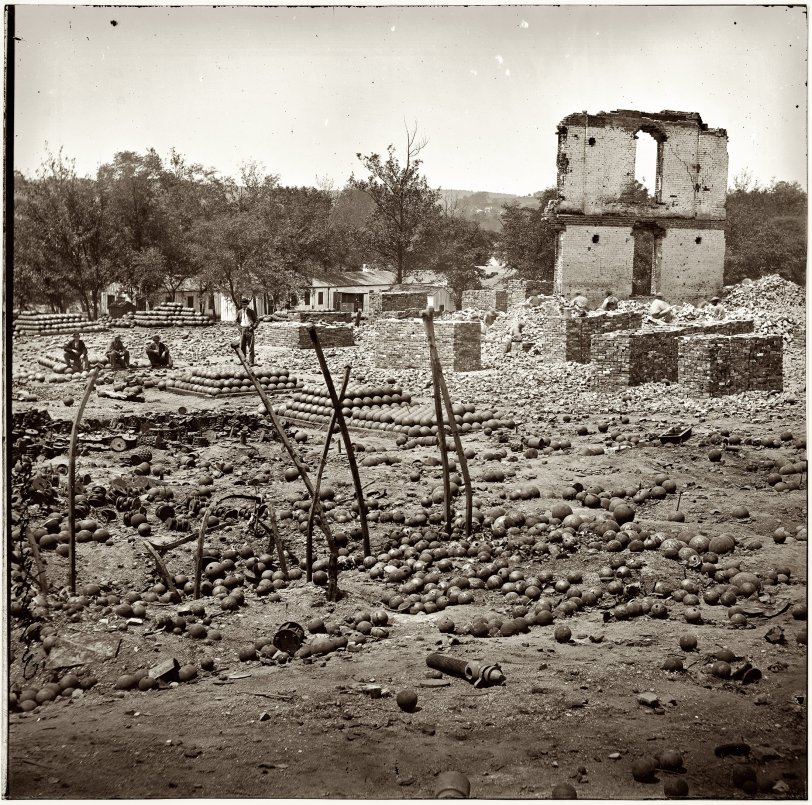
April 1865. Ruins of the State Arsenal at Richmond showing stacked and scattered ammunition. From photographs of the main Eastern theater of war after the fall of Richmond, compiled by Hirst Milhollen and Donald Mugridge. View full size.
- 6 comments
- 37390 reads
Mother Caroline: 1939
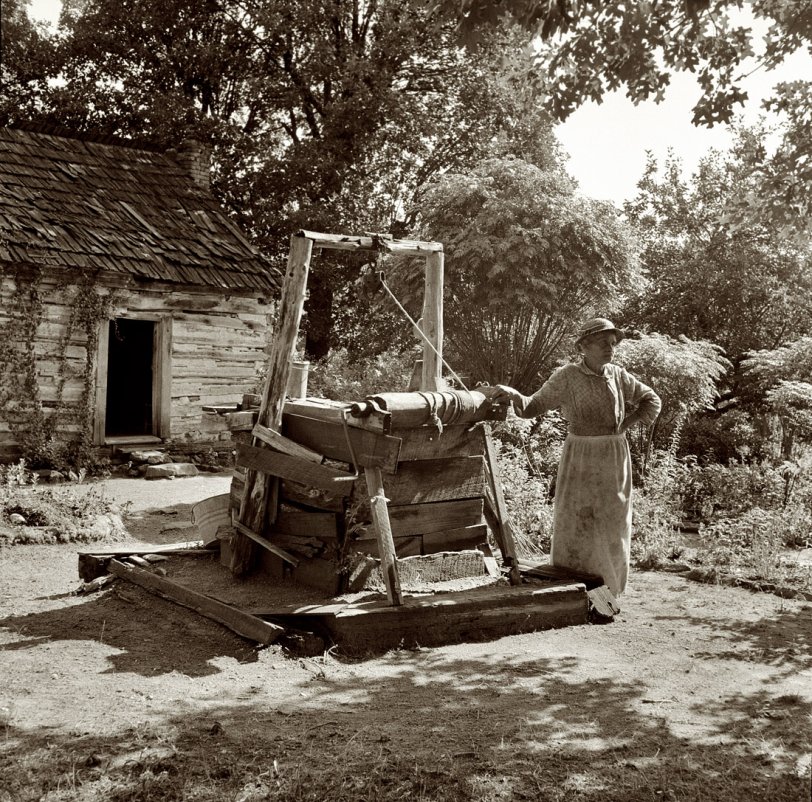
July 1939. Orange County, North Carolina. "Caroline Atwater, wife of Negro landholder, in the yard of her double one-and-a-half-story log house, telling where she was born and how she came to this place." View full size. Medium-format nitrate negative by Dorothea Lange for the Farm Security Administration.
- 6 comments
- 19572 reads
A Boy's Life: 1924
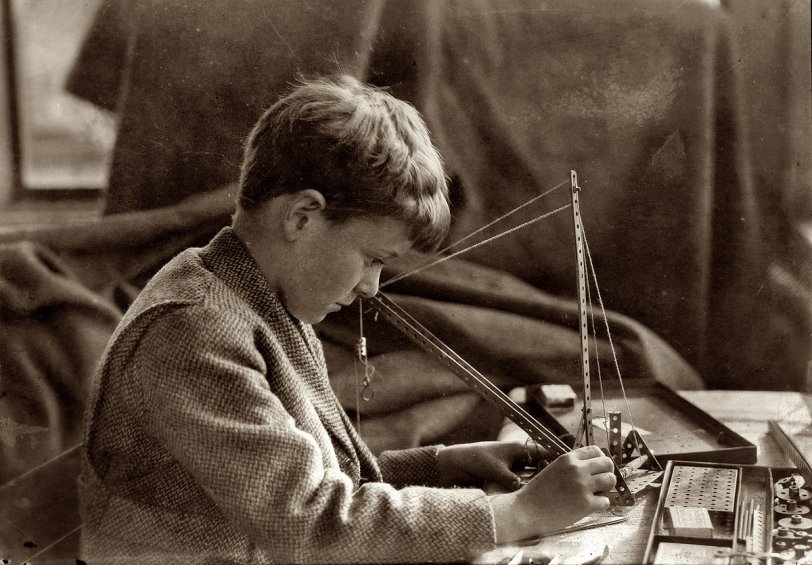
Circa 1924. "Boy with mechanical toy" by Lewis Wickes Hine, taken after his epic, decade-long assignment for the National Child Labor Committee. View full size.
- 8 comments
- 18178 reads
Let's Eat: 1939
![Let's Eat: 1939 July 1939. "Congregation gathers after services to talk. Wheeley's [Wheeler's?] Church, Person County, North Carolina." View full size. Medium-format nitrate negative by Dorothea Lange for the Farm Security Administration.](https://www.shorpy.com/files/images/8b34224u_0.preview.jpg)
July 1939. "Congregation gathers after services to talk. Wheeley's [Wheeler's?] Church, Person County, North Carolina." View full size. Medium-format nitrate negative by Dorothea Lange for the Farm Security Administration.
- 5 comments
- 17682 reads
Mrs. Aks: 1938
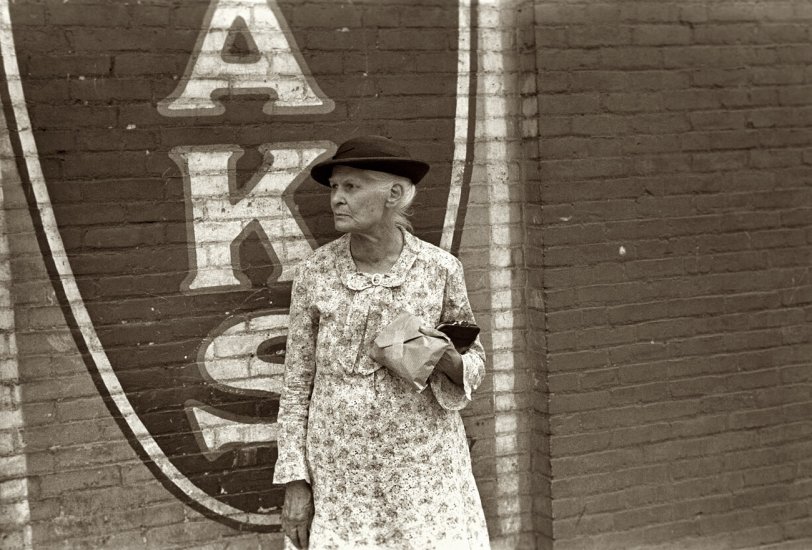
Summer 1938. Uncaptioned. Somewhere in Ohio, possibly Marysville. 35mm negative by Ben Shahn for the Farm Security Administration. View full size.
- 1 comment
- 9217 reads
Meet the Professor: 1935
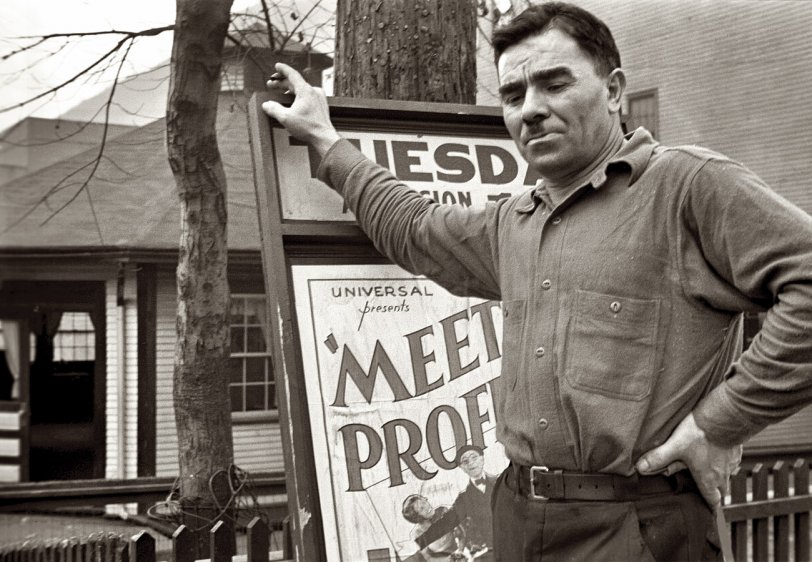
October 1935. Resident of Omar, West Virginia, seen here recently. 35mm nitrate negative by Ben Shahn for the Farm Security Administration. View full size.
- 7 comments
- 13446 reads
Earl Smith: 192x
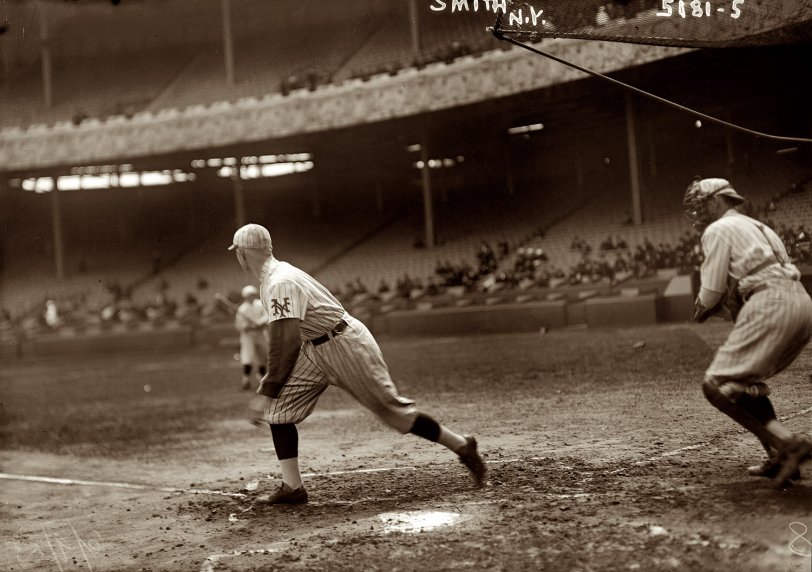
Earl Smith, New York National League (Giants). Date written on this glass-plate negative is June 9, 1923. Although another from this 5181 series of pictures taken at the Polo Grounds has "5/13/20" scratched into the emulsion. View full size. 5x7 glass negative, George Grantham Bain Collection.
- 5 comments
- 14635 reads
Sangre de Cristo: 1943
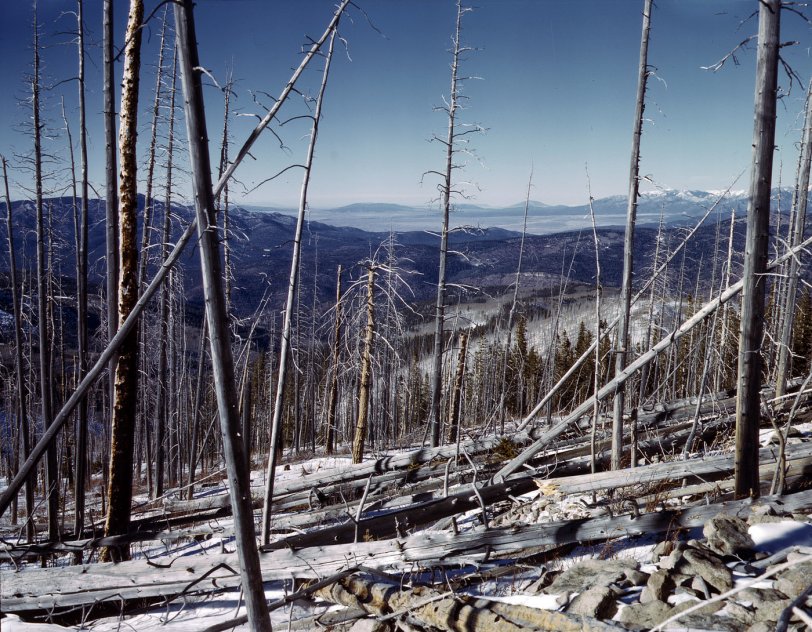
January 1943. The Sangre de Cristo Mountains above Penasco, New Mexico, looking north into Colorado. View full size. 4x5 Kodachrome by John Collier.
- 1 comment
- 14859 reads










